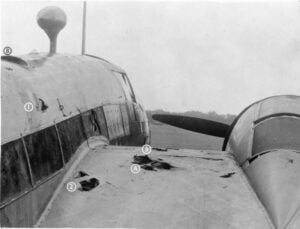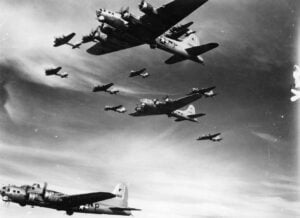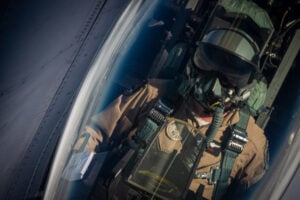10 Things About Japan’s Last-Ditch Kamikaze

YouTube / Ed Nash's Military Matters
As defeat loomed in World War II, Japan explored increasingly desperate ways to stop the Allied advance. Among the most extreme was the Ta-Gō, a kamikaze aircraft designed to be cheap, simple, and deadly—but it never made it off the ground.
1. It was designed as a kamikaze suicide attack plane
Starting in October 1944, Japanese pilots, many of them assigned to dedicated units, would crash their bomb laden planes directly into enemy ships. Their thinking was brutally logical- the loss of a single aircraft and pilot can lead to the deaths of dozens, possibly hundreds, of their enemy. Moreover, their targeted vessel would be damaged severely, possibly destroyed.
2. The Ta-Gō was designed to be simple, cheap, and needed the bare minimum to use
In late 1944, realizing that the Allies would soon be landing in Japan, Captain Yosuyuka Mizuyama of the Imperial Japanese Army recognized the requirement to design a simple, cheap, and easily produced weapon that needed the bare minimum for use by kamikaze units.
Without backing, though, it was difficult to make this idea into a reality. Undeterred, he rented a small workshop and, along with enthusiastic helpers, began building his prototype.
3. True to Captain Mizuyama’s idea, the initial prototype would be built with a wooden framework, plywood skin, and fabric coverings for the control surfaces
The landing gear was fixed and powered by a Hitachi-Ha 13 9-cylinder radial engine that produced approximately 450 hp. The armament was to be a single 500 kg bomb that would be fixed to the aircraft and couldn’t be dropped.
4. Mizuyama eventually approached Kokusai Corporation with his idea to develop the aircraft
With the prototype destroyed in a bombing raid, Mizuyama eventually approached the aircraft company, which made several light aircraft for the Japanese military, with the idea.
Kokusai liked the concept, but they thought it needed to be even lighter and cheaper. This prompted Mizuyama to return to the drawing board, and by June 1945, he had a prototype ready for testing.
5. The Ta-Gō was much smaller and lighter than the initial prototype
The engine was now a Hitachi Ha-47 driving a two-blade wooden propeller, and the aircraft was a lot smaller, with only a wingspan of 8.9 meters and just 7.4 meters long. It was also much lighter with a maximum takeoff weight of 1,290 pounds. This included the payload, now a single 100 kg. fixed to the aircraft.
6. The performance of the aircraft was extremely limited
The Ta-Gō had a top speed of 120 mph, and the range was around 93 miles or around 150 kilometers.
7. Construction was as simple as it could be
The aircraft, being entirely wooden and extremely boxy instead of streamlined, was relatively easy to construct, with only the engine mounting being made of metal.
8. The plane’s only instruments were a compass, speedometer, altimeter, and fuel and oil gauges
There was no fuel pump. Instead, the tank was mounted above the engine and used gravity.
9. Although simplicity was paramount, one feature was built in for the aircraft’s unique tactical usage
Folding wings were added because it was thought that this would allow more aircraft to be built by taking up less space in the factories. It was also included because it was envisioned that the Ta-Gōs would be hidden in small buildings, even caves, before being brought out to launch surprise attacks.
10. It never took to the skies as a kamikaze plane
In August 1945, the United States dropped atomic bombs in Hiroshima and Nagasaki, bringing the end of the war. The Ta-Gō almost completely vanished into history and is almost completely forgotten.




















